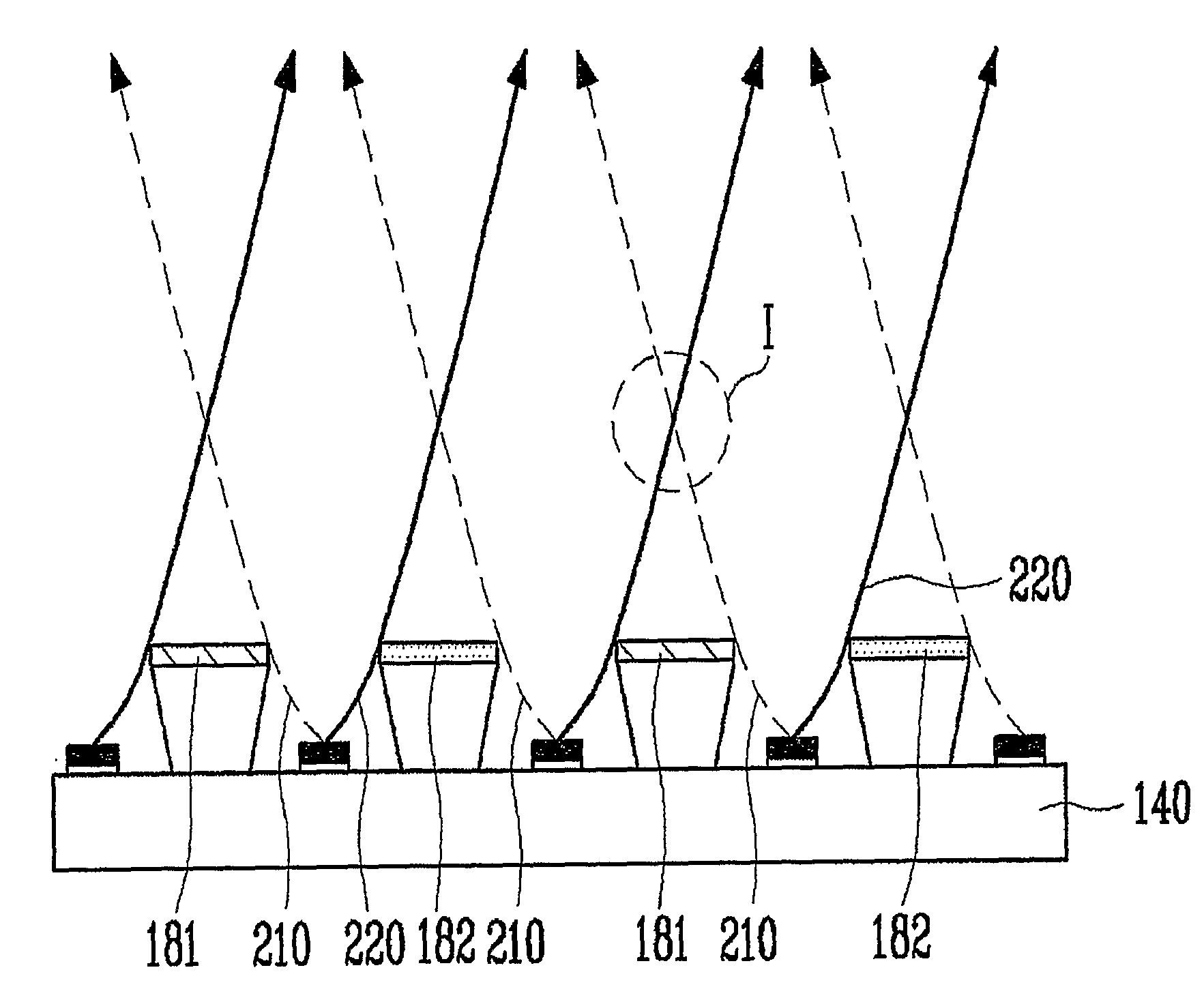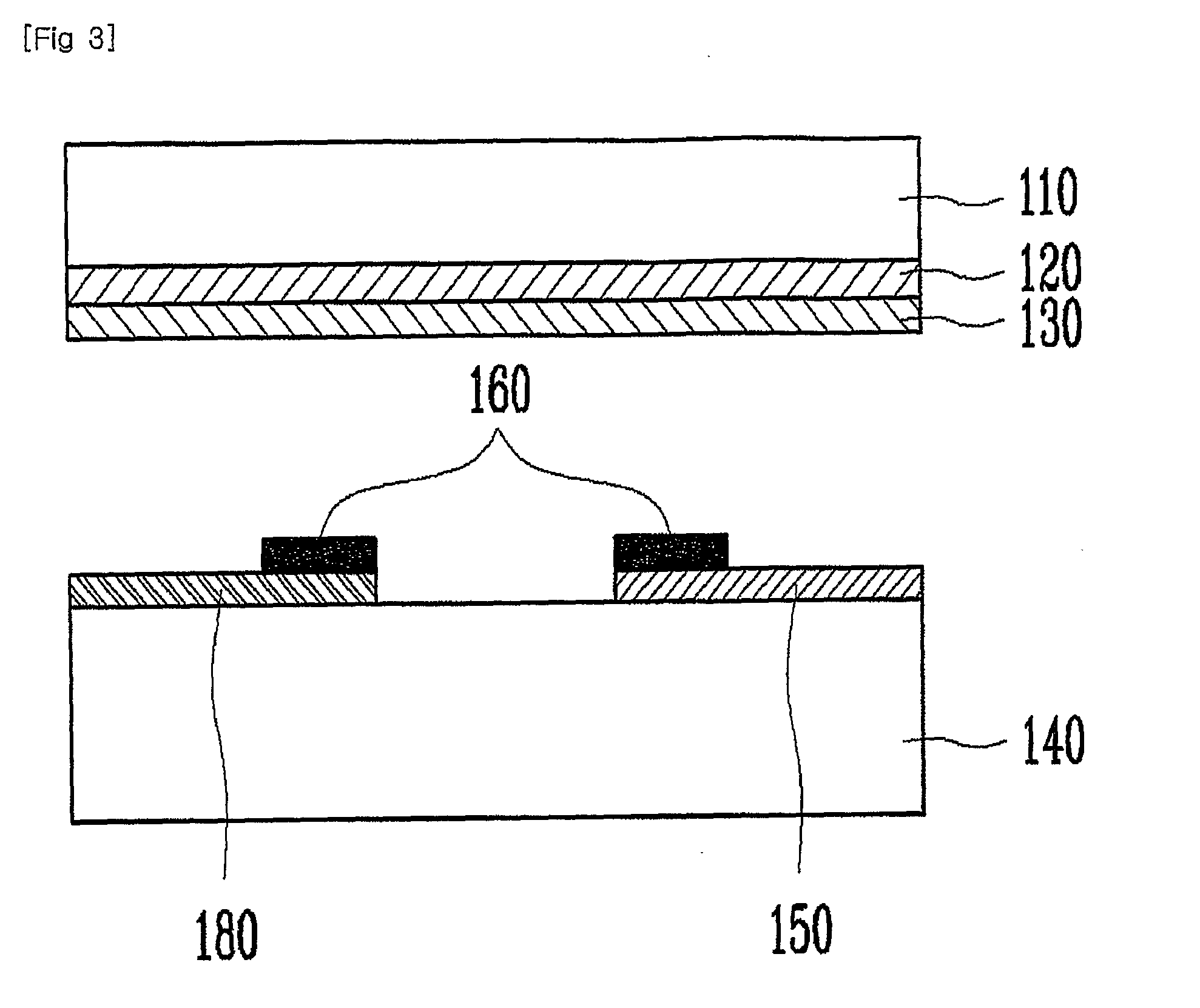Field emission device
a field emission and emission device technology, applied in the manufacture of electric discharge tubes/lamps, discharge tubes luminescnet screens, instruments, etc., can solve the problems of high manufacturing cost, environmental pollution, non-uniform emission, etc., to improve the emission uniformity of the phosphor layer, high efficiency emission, and high voltage
- Summary
- Abstract
- Description
- Claims
- Application Information
AI Technical Summary
Benefits of technology
Problems solved by technology
Method used
Image
Examples
Embodiment Construction
[0053]Hereinafter, exemplary embodiments of the present invention will be described in detail. In the present exemplary embodiment, a gate insulator has a height greater than that of a gate electrode to form a gate substrate having a height greater than a diameter of an opening. However, to increase the height of the gate substrate, the gate electrode may have a greater thickness. In this manner, the height of the gate substrate may increase by increasing either the height of the gate insulator or the height of the gate electrode.
[0054]FIG. 5 is a partially enlarged perspective view schematically illustrating a field emission device according to an exemplary embodiment of the present invention, FIG. 6 is an enlarged plan view of an area of a cathode substrate of FIG. 5, and FIG. 7 is a cross-sectional view taken along line VII-VII of FIG. 5.
[0055]Referring to FIGS. 5 to 7, the present field emission device, i.e., a field emission backlight unit includes an anode substrate 110, a cat...
PUM
 Login to View More
Login to View More Abstract
Description
Claims
Application Information
 Login to View More
Login to View More - R&D
- Intellectual Property
- Life Sciences
- Materials
- Tech Scout
- Unparalleled Data Quality
- Higher Quality Content
- 60% Fewer Hallucinations
Browse by: Latest US Patents, China's latest patents, Technical Efficacy Thesaurus, Application Domain, Technology Topic, Popular Technical Reports.
© 2025 PatSnap. All rights reserved.Legal|Privacy policy|Modern Slavery Act Transparency Statement|Sitemap|About US| Contact US: help@patsnap.com



